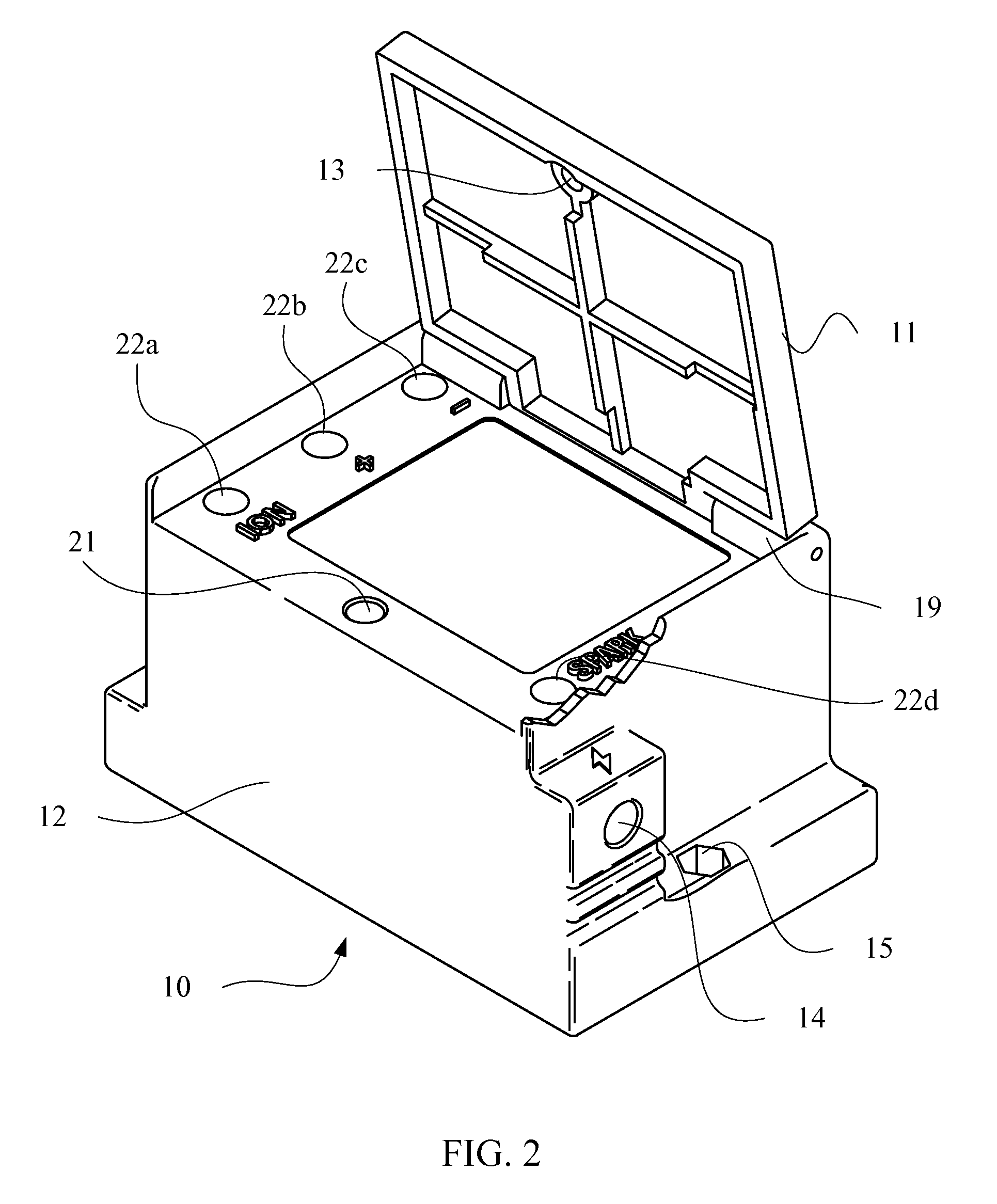Coil system and housing
a coil system and coil technology, applied in the direction of transformers/inductance coils/windings/connections, inductances, electrical devices, etc., can solve the problems of coils not properly transferring current, current use of combustion management systems, and risk of unwanted arcing
- Summary
- Abstract
- Description
- Claims
- Application Information
AI Technical Summary
Benefits of technology
Problems solved by technology
Method used
Image
Examples
Embodiment Construction
[0037]The invention and accompanying drawings will now be discussed in reference to the numerals provided therein so as to enable one skilled in the art to practice the present invention. The drawings and descriptions are exemplary of various aspects of the invention and are not intended to narrow the scope of the appended claims.
[0038]Referring now to FIG. 1. a perspective view of a coil housing 10 for a coil system in accordance with the present invention is shown. As seen in FIG. 1, the coil housing 10 may comprise a housing lid 11 and a primary housing 12, wherein the housing lid 11 may be disposed on the primary housing 12. The housing lid 11 and the primary housing 12 may be made of any non-conductive material, including non-conductive plastics, polymers, or composite materials. The housing lid 11 and the primary housing 12 may be made using injection molding, machining, and any other methods commonly used by those skilled in the art for making articles of non-conductive mater...
PUM
| Property | Measurement | Unit |
|---|---|---|
| combustion | aaaaa | aaaaa |
| non-conductive | aaaaa | aaaaa |
| conductive | aaaaa | aaaaa |
Abstract
Description
Claims
Application Information
 Login to View More
Login to View More - R&D
- Intellectual Property
- Life Sciences
- Materials
- Tech Scout
- Unparalleled Data Quality
- Higher Quality Content
- 60% Fewer Hallucinations
Browse by: Latest US Patents, China's latest patents, Technical Efficacy Thesaurus, Application Domain, Technology Topic, Popular Technical Reports.
© 2025 PatSnap. All rights reserved.Legal|Privacy policy|Modern Slavery Act Transparency Statement|Sitemap|About US| Contact US: help@patsnap.com



